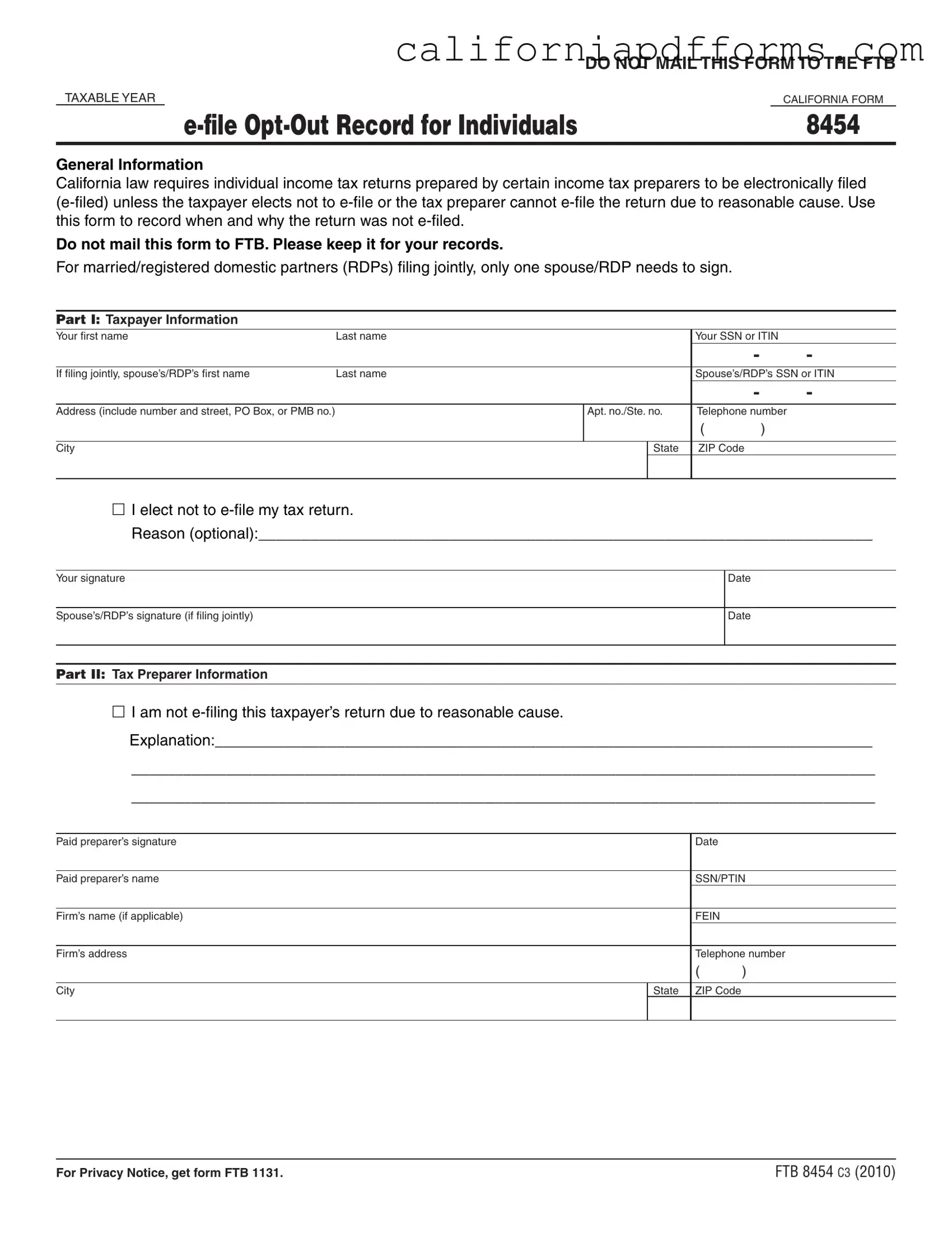The California Form 8454 is an important document for individuals who are opting out of electronically filing their income tax returns. Under California law, certain tax returns prepared by tax preparers must be e-filed. However, if a taxpayer chooses not to e-file or if the tax preparer has a reasonable cause for not e-filing, this form is used to record that decision. Remember, you should keep this form for your records and not send it to the Franchise Tax Board (FTB).
Form 8454 is primarily for individual taxpayers who have their tax returns prepared by a tax professional. If you are filing your taxes and either you or your tax preparer has decided not to e-file, this form is necessary. For couples filing jointly, only one spouse or registered domestic partner (RDP) needs to sign the form, making it a bit simpler for those filing together.
When completing Form 8454, you will need to provide several key pieces of information:
-
Your first and last name, along with your Social Security Number (SSN) or Individual Taxpayer Identification Number (ITIN).
-
If applicable, your spouse's or RDP's name and SSN or ITIN.
-
Your address, including street number, city, state, and ZIP code.
-
A checkbox indicating your choice not to e-file, along with an optional reason for this choice.
-
Your signature and the date, as well as your spouse's or RDP's signature if filing jointly.
After you have filled out Form 8454, it’s crucial to keep it for your records. Do not mail it to the FTB. This form serves as documentation of your decision to opt out of e-filing and may be important if any questions arise regarding your tax return in the future.
Yes, your tax preparer can assist in filling out Form 8454. They will provide their information, including their signature and the reason for not e-filing, if applicable. However, as the taxpayer, you still need to review and sign the form. This ensures that you are aware of the decision and agree with the reasons for opting out of e-filing.
